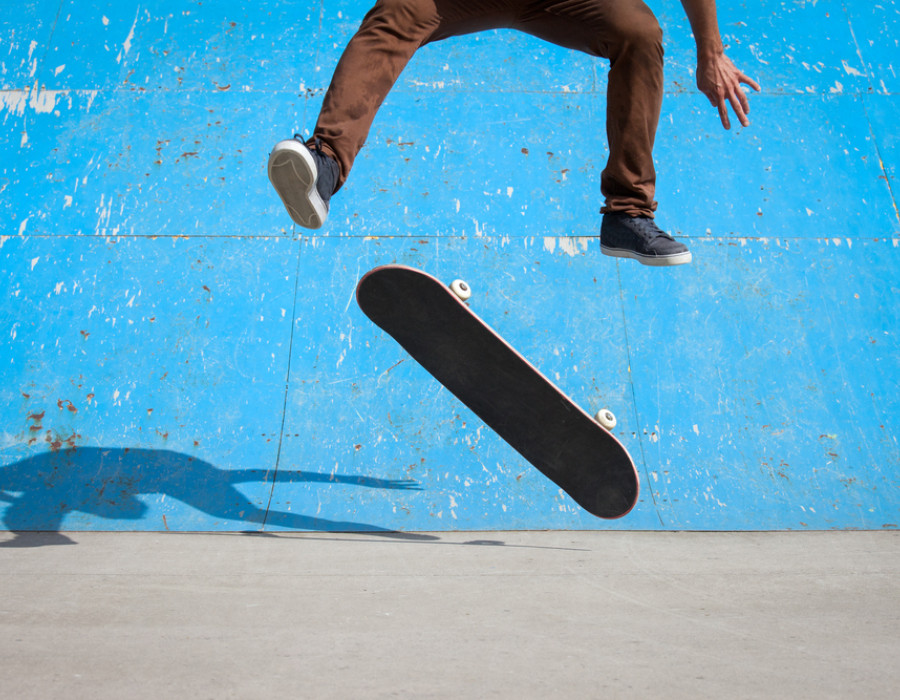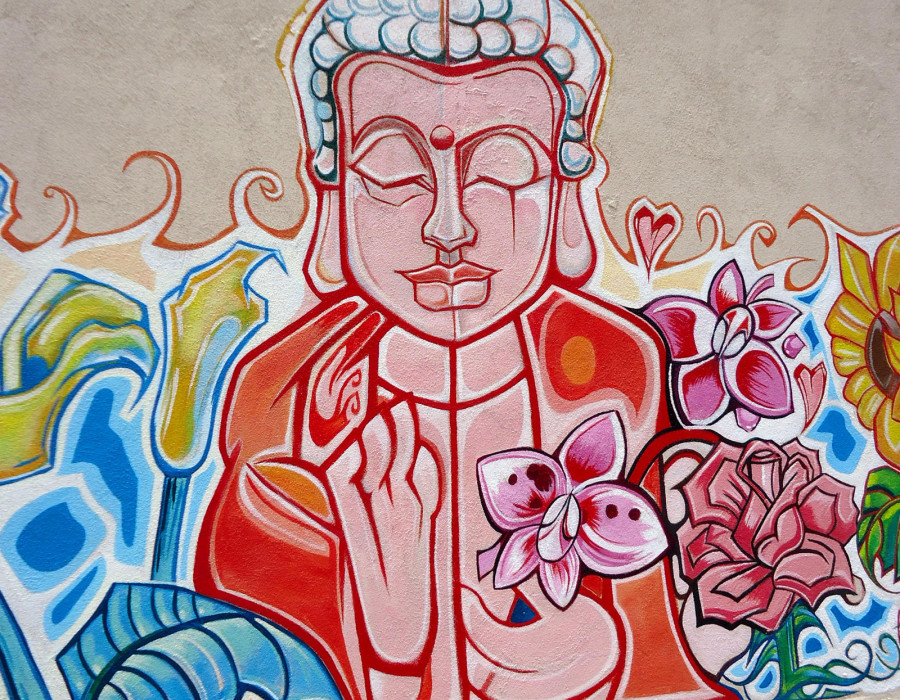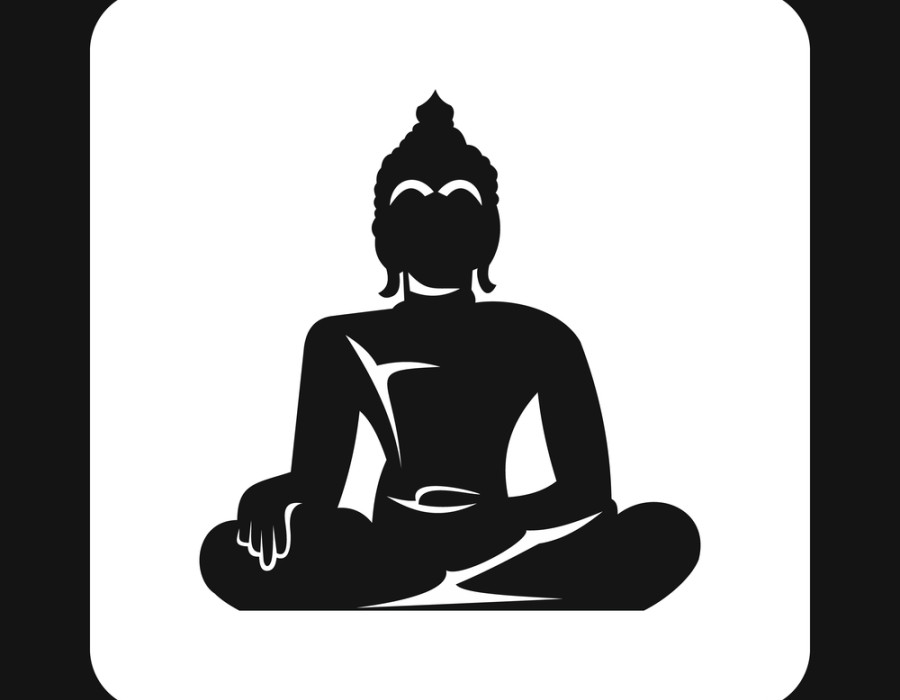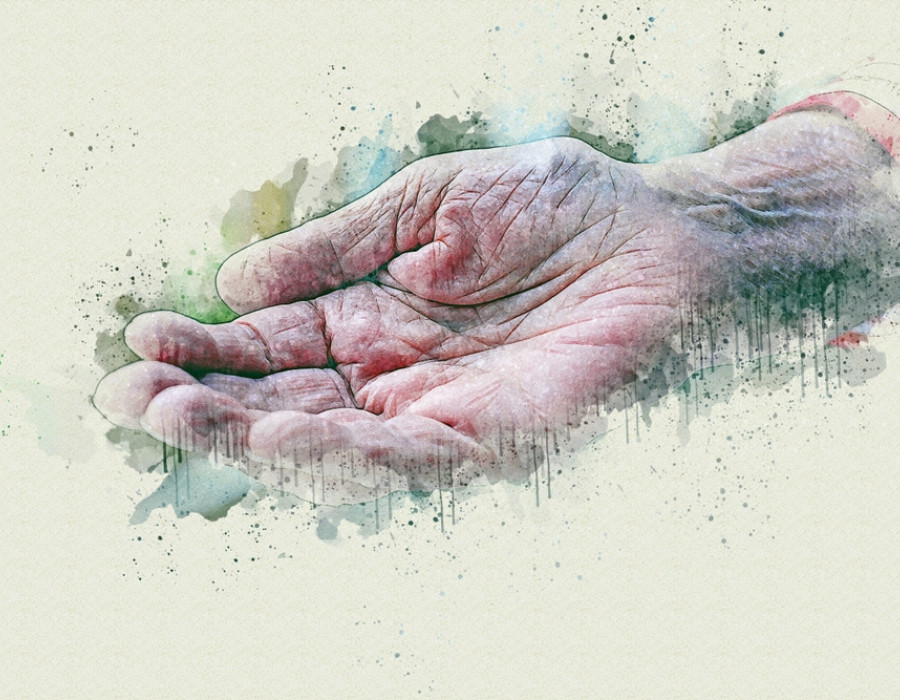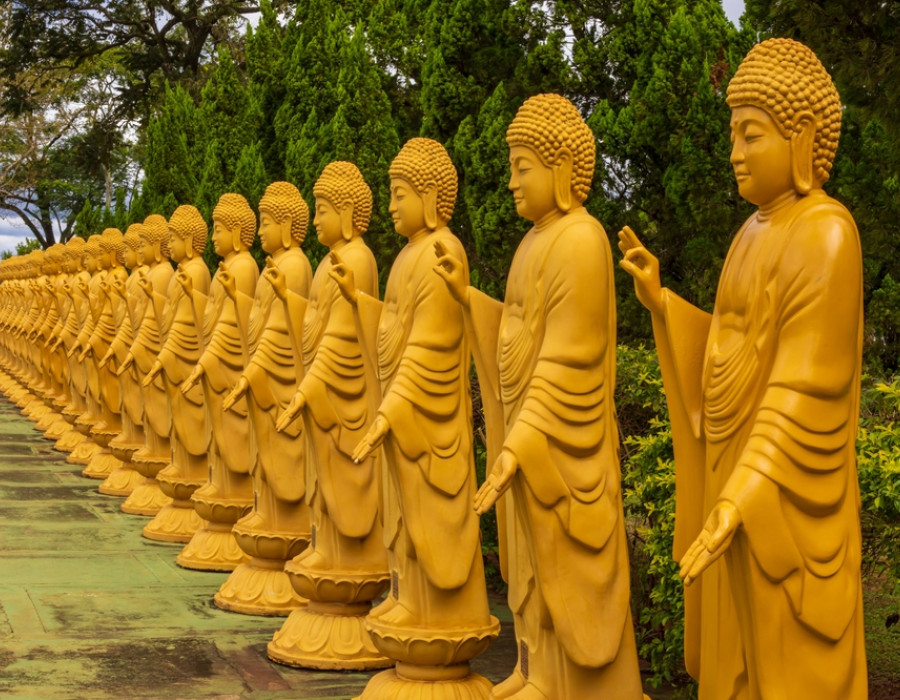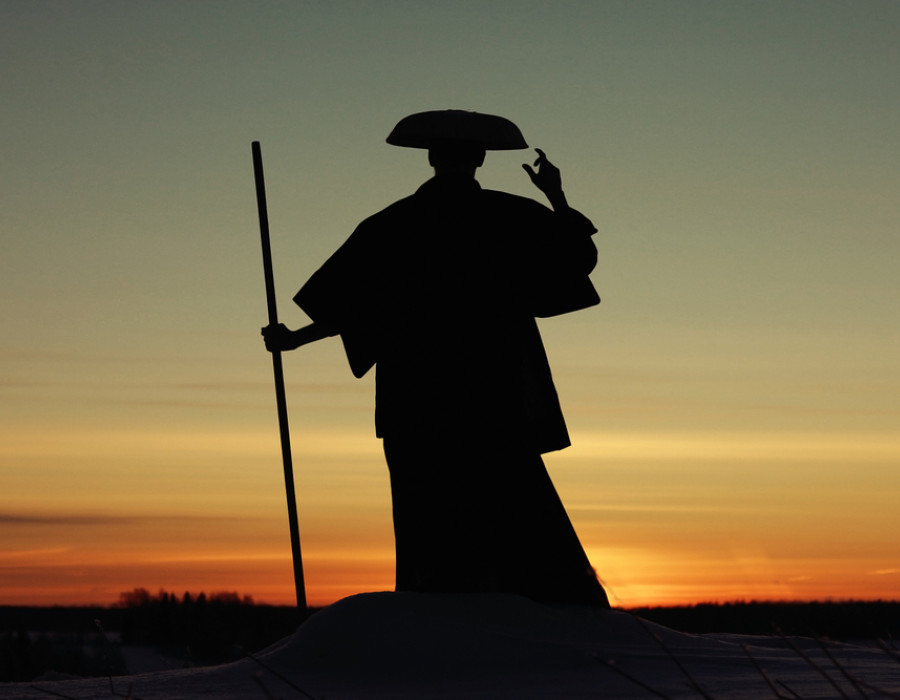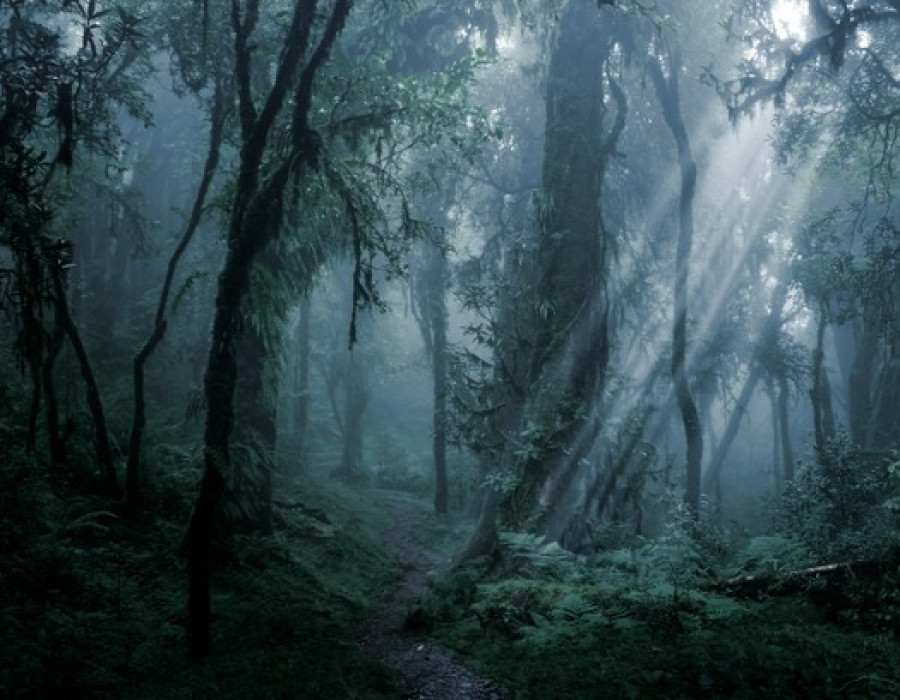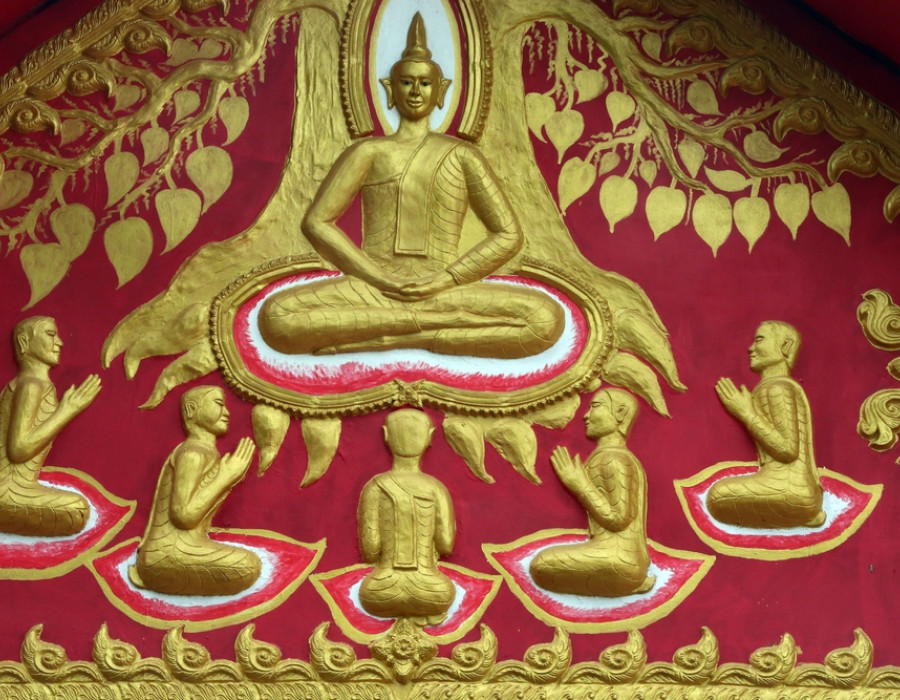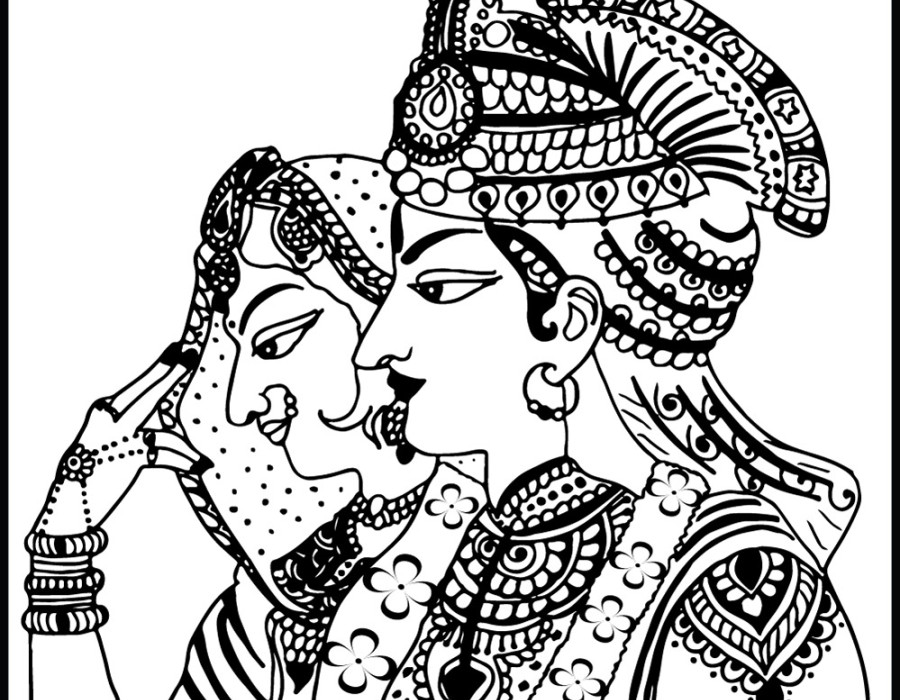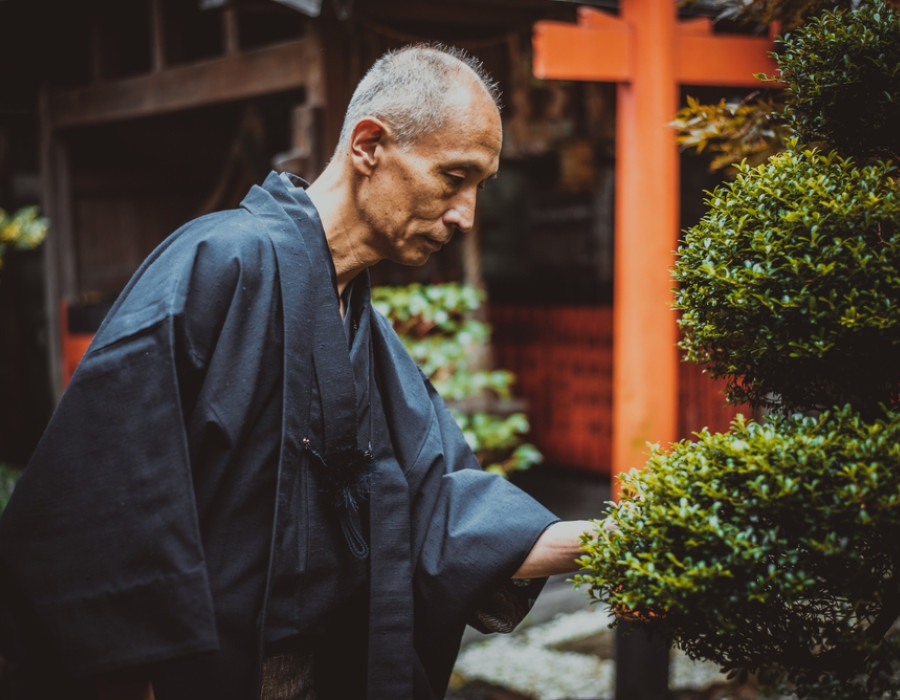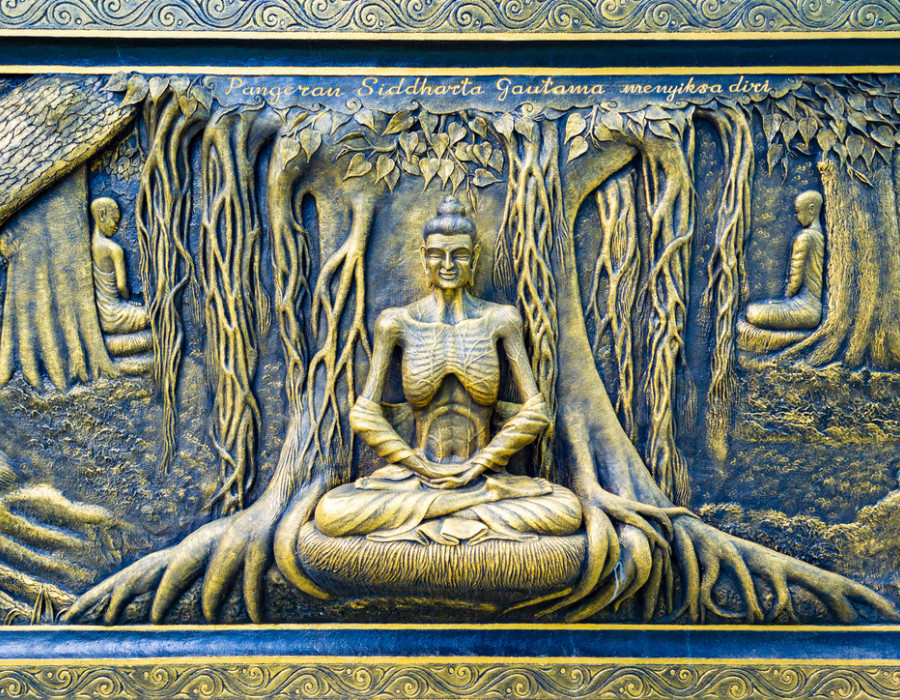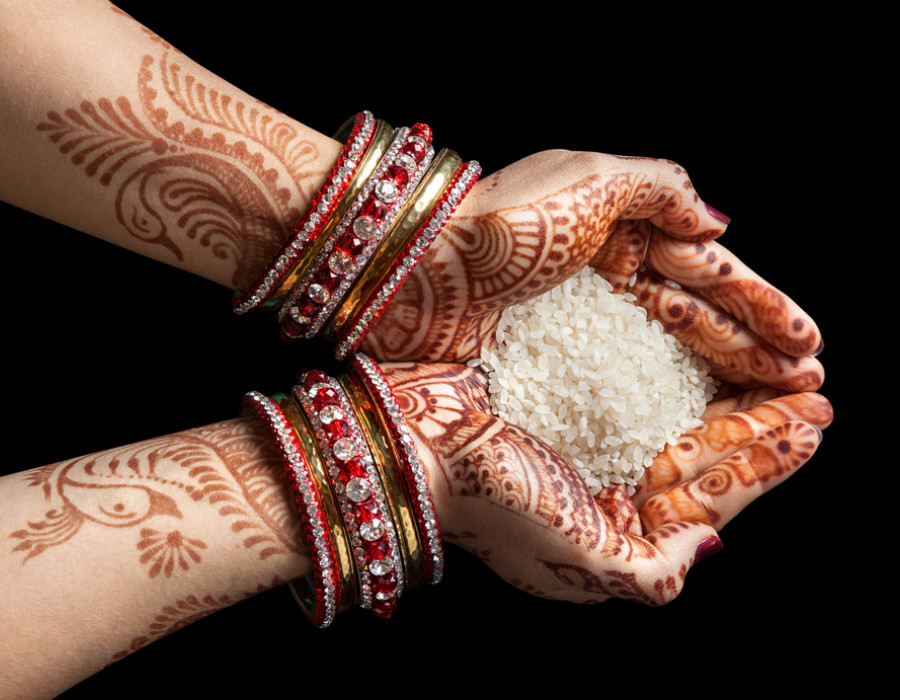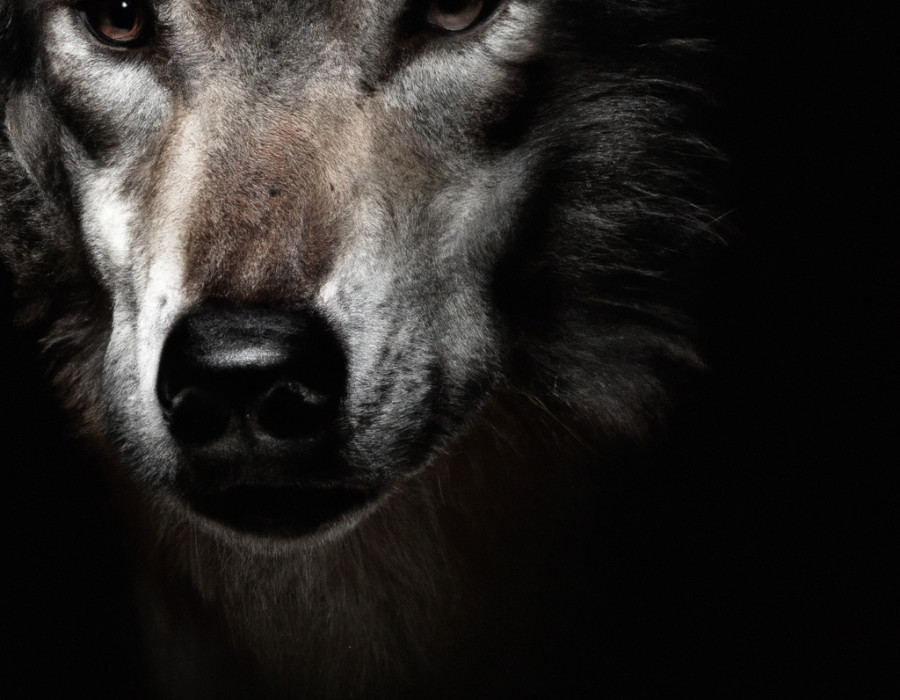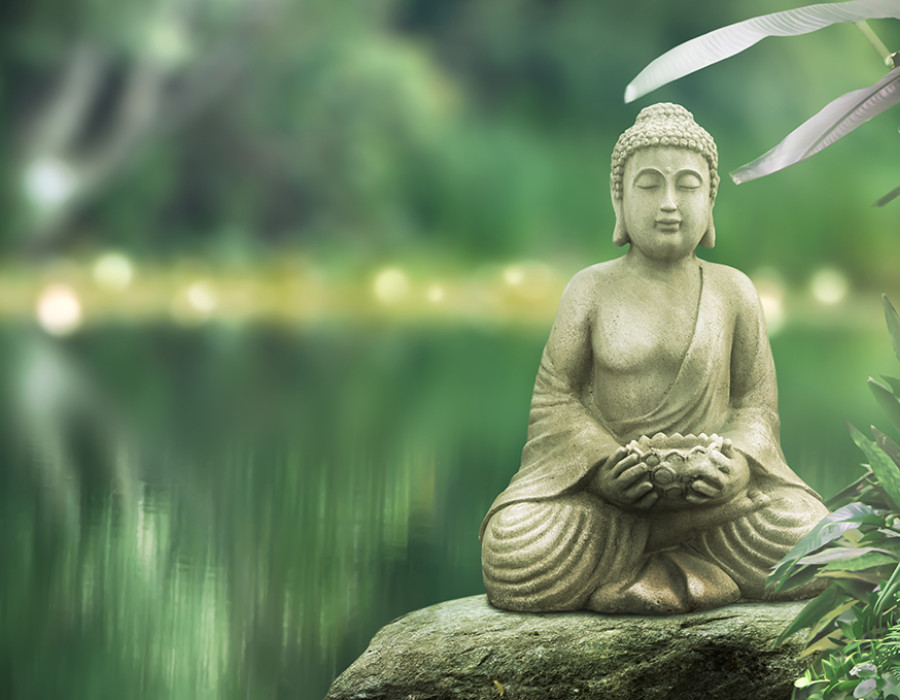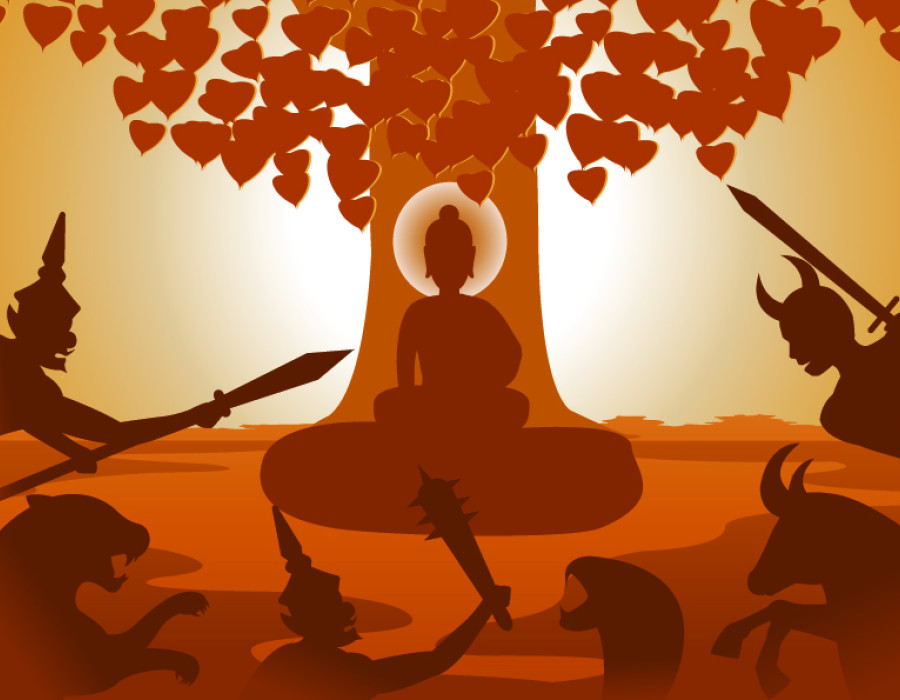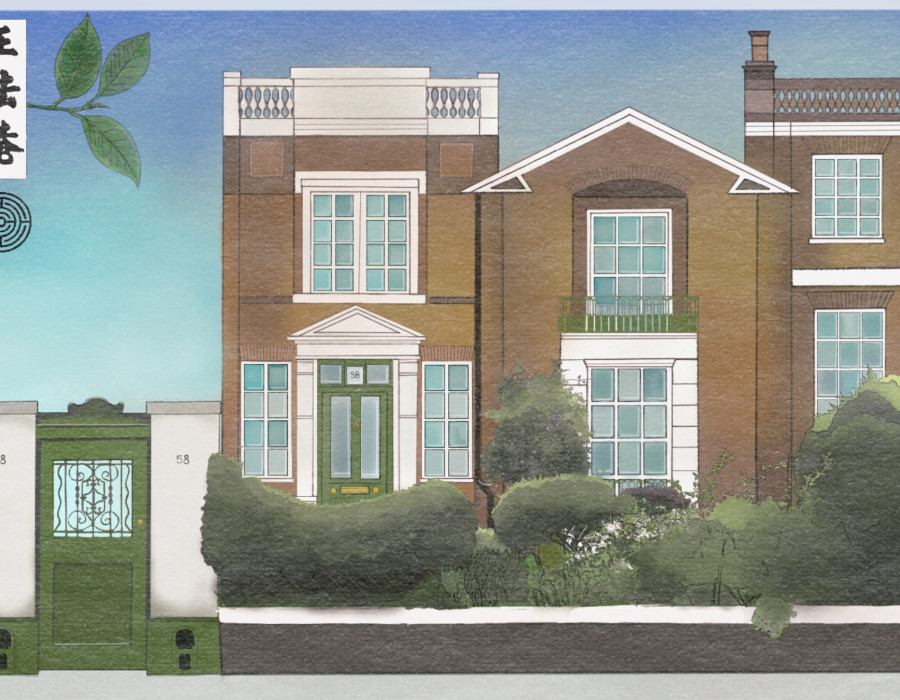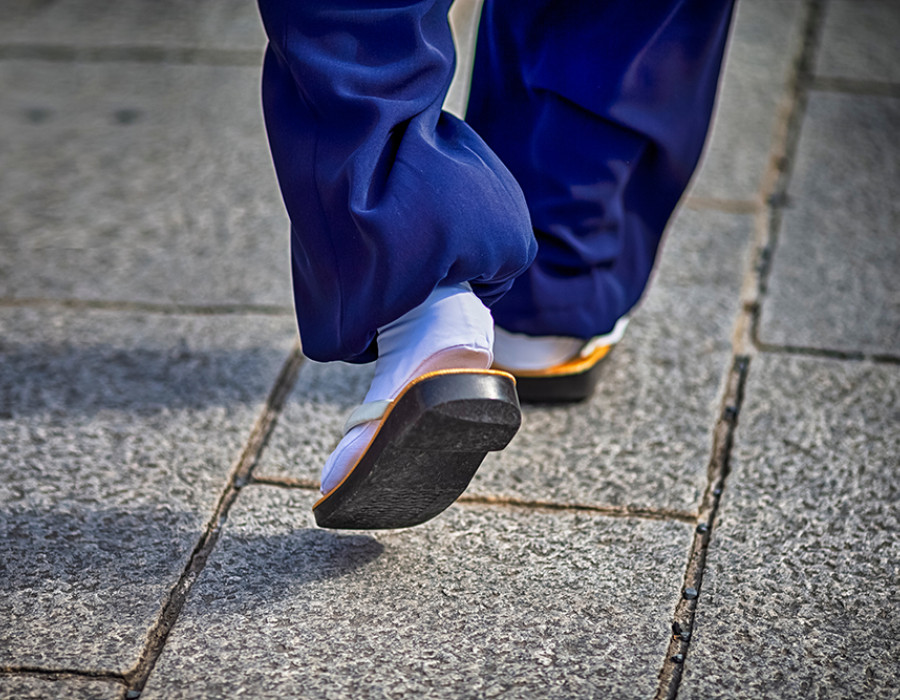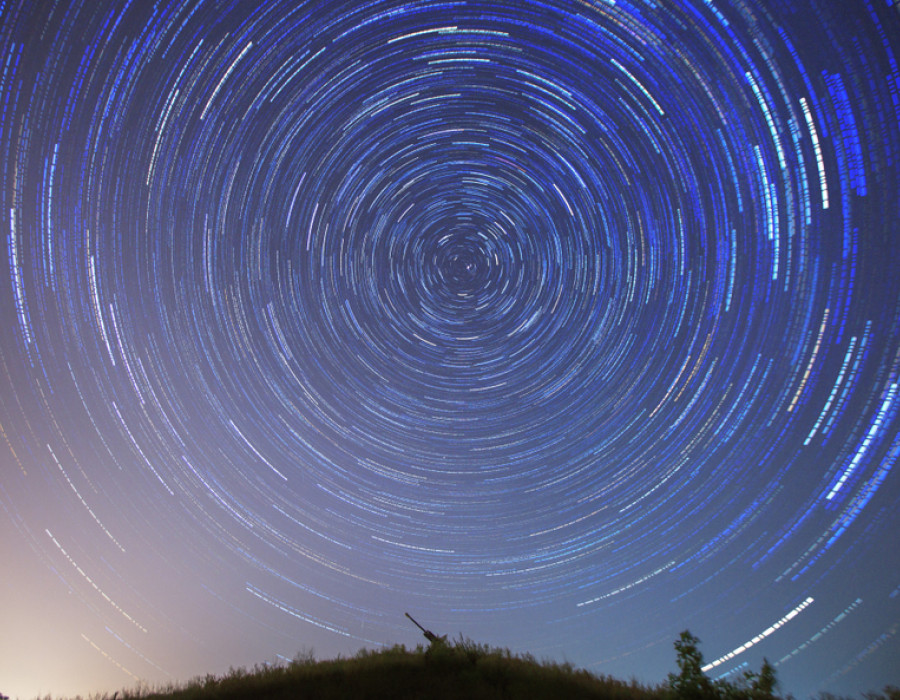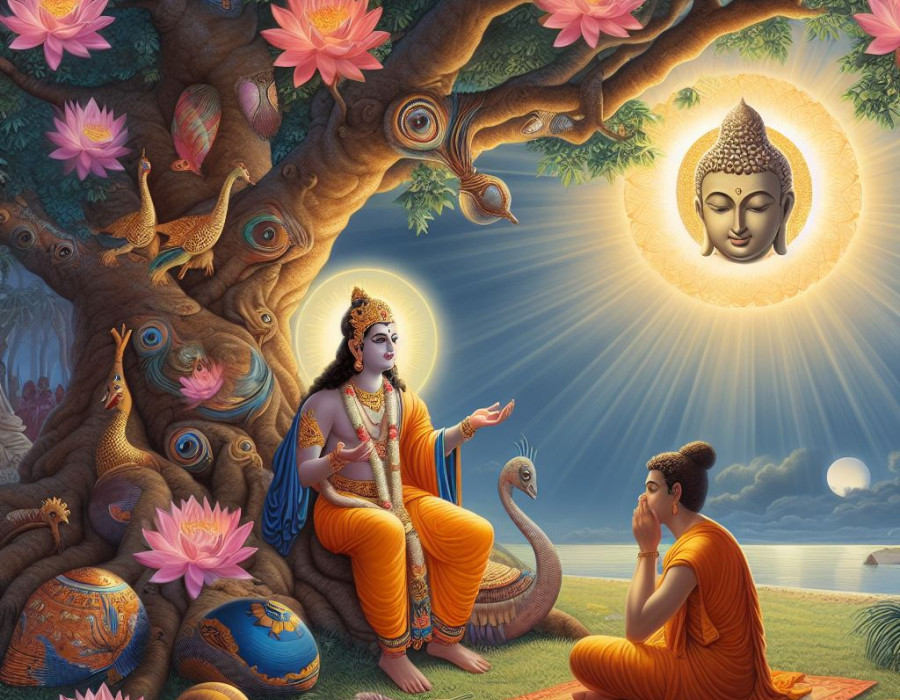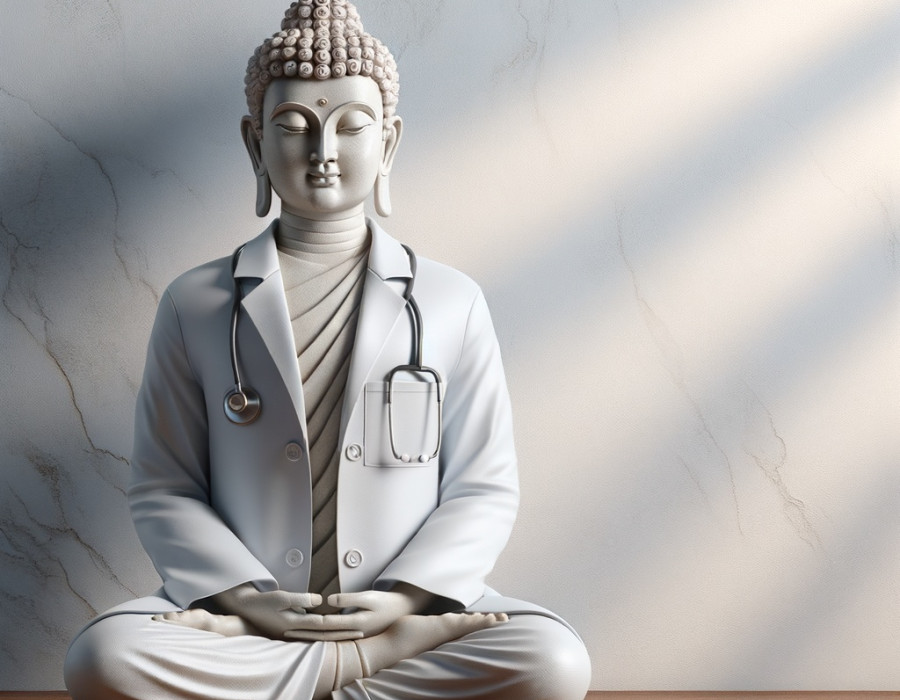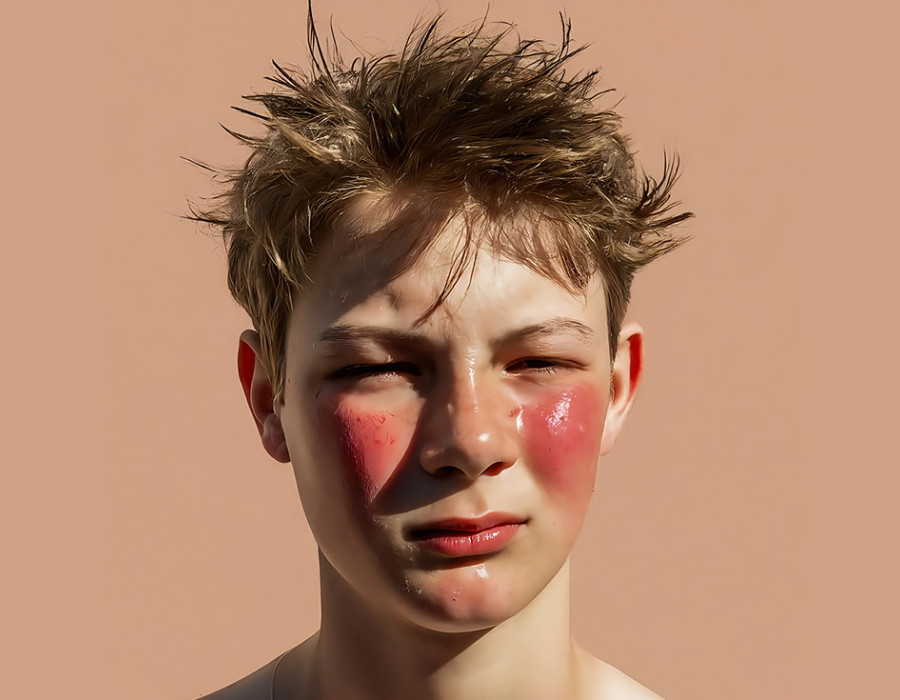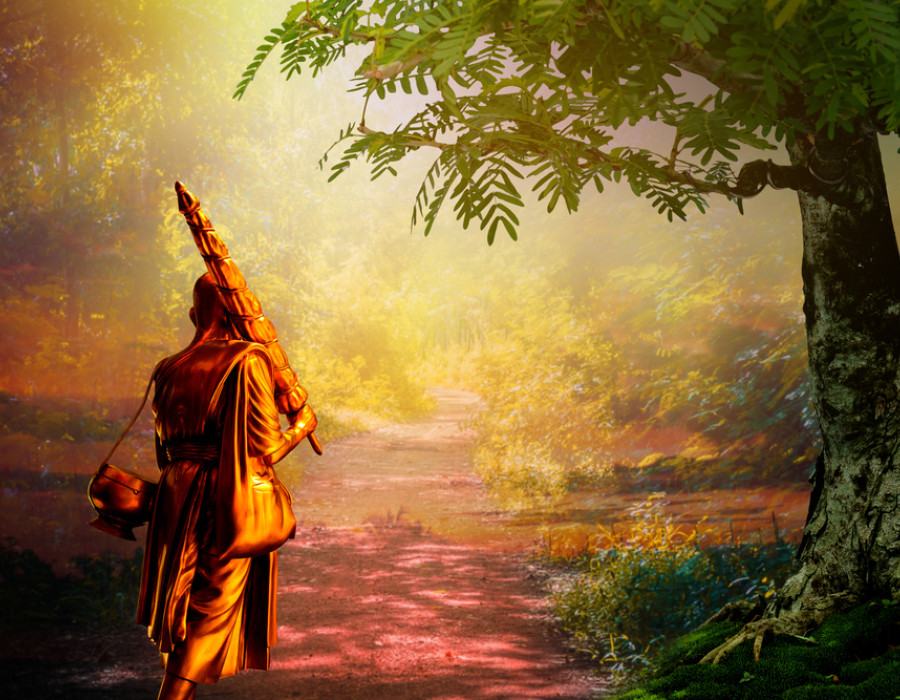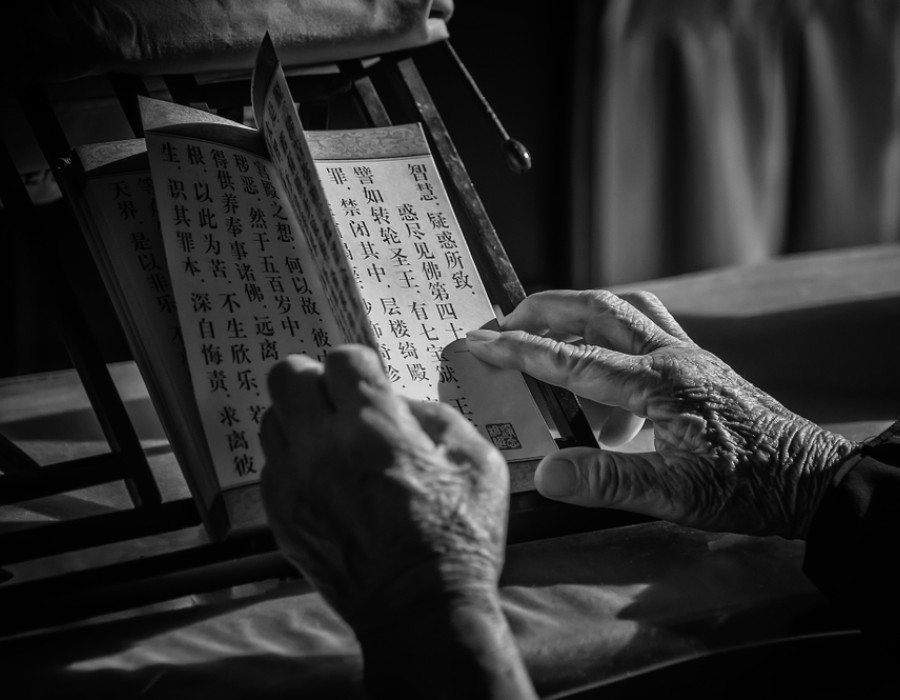11. King Bimbisara
THE BUDDHA BLOG
King Bimbisara makes a very tempting offer that will surely test the Buddha's resolve.
 ©
© S
The river Siddhartha crosses that night with Channa is called the Ancona. It divides the hilly kingdom of Sakya (ruled by his Dad) from the flat kingdom of Magadha. Siddhartha slowly makes his way south toward the capital city, Rajagaha. When Siddhartha first stepped outside his palace walls he saw only one ascetic, but in Rajagaha there are many more. It’s a spiritual centre. On almost every street there are monks like Siddhartha, all carrying begging bowls, but he has a special air about him. Even in his rags he looks and acts like a prince and soon King Bimbisara hears about him. Anyway, the hot news about King Suddhodana’s son has already spread far and wide. The young king is so sure this is Prince Siddhartha he comes out of his castle to say hello.
Jizo thinks the story of Siddhartha’s meeting with King Bimbisara is about having second thoughts. Even when we make important decisions of our lives - like choosing our best mate – there are always second thoughts. Jizo wants us to come up with our own examples. Of course, there’s Mum and her one glass of wine before dinner. Every few weeks Mum decides to stop drinking alcohol, and for a while it looks like she’s done it, but she always has second thoughts around dinner time. In the Buddha’s case, it was never going to be about a glass of wine. King Bimbisara presses him about giving up the chance to be king. They’re both young men. Siddhartha is 29 years old and; the king is only 25. He instantly likes Siddhartha but he’s also shocked. They’re both royals. It’s a class thing. The king wants to know what he’s doing here.
“Did you quarrel with your father?”
But Siddhartha smiles.
“No. I left the narrow life of the palace for the freedom of the open air. I’m seeking an end to the suffering we all go through because of old age, sickness and death.”
King Bimbisara tests him.
“I tell you what. If you give up your foolish search, I’ll give you half my kingdom.”
Siddhartha politely turns him down and now the young king is majorly impressed . He thinks if anyone is going to reach his goal it will be this man, and he makes Siddhartha promise to come back after he’s enlightened and teach him everything he’s discovered. One day they’ll be great friends, but right now Siddhartha’s off to find a teacher.
Gurus
Remember what Jizo said about the castes in India in the Buddha’s time? How everyone is born to do a certain thing for life and they have to do it? Well, here are some more names. I want to put them down before I forget:
Brahmin: - anyone born to be a priest .
Basically, being a priest involves lots of chanting and other special ceremonies to make sure the gods are happy and the crops grow.
kshatriya: - a warrior.
They also rule. The Buddha’s family are kshatriyas.
samana: - a homeless person looking forof enlightenment.
guru: - a teacher. We kind of know this word already, but this is all it means.
There are brahmins in India today, but they’re no longer just priests. They do all sorts of things. You don’t hear about kshatriyas anymore because warriors don’t rule India. But there are still samanas. There were wandering samanas before the Buddha’s time. Anyone could leave home even then and become a samana. But there was one thing: you were supposed to find a spiritual teacher - your guru. It didn’t matter who this was. It was your choice. Some gurus were famous and had lots of students. Some just had a few followers. The important thing for samanas was to follow a spiritual path and not stand around pretending to be holy so people would feed them.
In India people still respect samanas. They believe that if they give a samana food the gods will reward them. Of course, they don’t like being fooled by beggars, but in the Buddha’s time this wasn’t a problem because most samanas were also brahmins and brahmins were famous for their honesty. They would rather die than tell a lie. (Imagine that!) If you asked them who their guru was, they would tell you straight out. If you asked them about their own wisdom, they would be honest about that too - what they knew and what they didn’t know.
Siddhartha hears of a guru called Alara. He’s a yoga teacher and one of the most famous gurus in northern India. By this time Kondanna, the old court priest, and the four young brahmins have found Siddhartha so they decide to learn from this guru together. Alara is famous for being a master of concentration. He can go into a trance and totally shut out the world. He can sit under a tree completely awake and have five hundred carts go by with all kinds of banging and shouting. He won’t notice them. Siddhartha and his friends enroll as Alara’s students. Siddhartha quickly masters the technique. Alara is impressed and offers to make him a partner in his meditation business. Of course, everyone knows Siddhartha is a royal. And a friend of King Bimbisara. Maybe Alara figures he’s onto a good thing. Together they’ll attract more followers than ever. But Siddhartha is disappointed because now he knows everything his guru knows and it isn’t that much. Whenever Siddhartha comes out of his trance, he’s back to square one. The problems of old age, sickness and death are still there. So, Siddhartha turns down Alara’s offer and decides to move on.
The next guru Siddhartha comes across has a name that doesn’t stick in my mind: Uddaka Ramaputta. Uddaka inherits his meditation school from his father Rama, but he never quite reaches his level. Siddhartha and his friends agree to become his students. Siddhartha throws himself into his studies and we already know he’s a super quick learner. So before long he’s mastered Rama’s technique. Rama’s son is amazed and offers to make Siddhartha the head of his school, but Siddhartha turns him down too. He may know as much as Rama did and even more than Rama’s son Uddaka, but his heart is not yet at peace.
Siddhartha decides it’s time to strike out on his own. He becomes a wandering samana again, but this time he decides to practice being an ascetic. What is an ascetic? Jizo says an ascetic is someone who is suspicious of the easy life. An ascetic thinks that people who just want to eat, drink and be merry are wasting their time because they end up soft and selfish instead of strong and free. So instead of working to get more and more for themselves, ascetics try to get by with less and less. Siddhartha likes the idea of being an ascetic and throws himself completely into his new practice. Alone again, he travels further south until he finds a nice spot in a forest. It’s on a river bank near some villages where he can find food. There he sits down and tries one thing after another. He clenches his teeth hard to make himself stop thinking. He really goes at it, forcing himself again and again, but only manages to break into a sweat. Then he holds his breath until he hears loud roaring noises in his ears. He gets lots of headaches and stomach cramps but he’s no wiser for it. He can’t control his feelings or reactions to things either. Here’s what the Buddha says about those days:
“The loneliness of the forest is hard to bear. It’s hard to take pleasure in being alone… When at night I stayed in such frightening and fearful places, and an animal passed by, or a peacock broke a twig, or the wind rustled among the leaves, I was filled with terror and panic.” (MN4)
Jizo knows these words of the Buddha by heart. I thought this was because of Jizo’s own experience in the forest, but he says ‘no’. He remembers them because they show the Buddha trying to meditate and failing. Jizo calls this an example of “beginner’s mind”. Even though the Buddha studies with the two best teachers in India, and is their star student, he doesn’t fool himself into thinking he’s got somewhere when he hasn’t. He just goes back to the beginning again and again until he really gets it. Then what he learns isn’t something he has to remember. It’s just who he is. Jizo says his own teacher at the monastery called this “learning with the body”. It can’t be explained. It has to be experienced in the body. I suppose it’s like learning to do a kick flip on a skateboard.
THE BUDDHA BLOG | Michael Haggiag
Books

